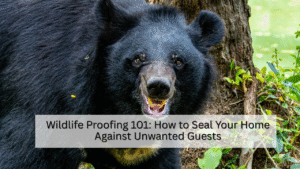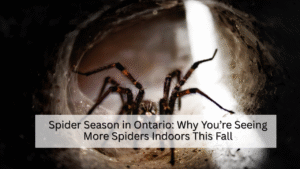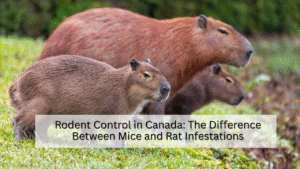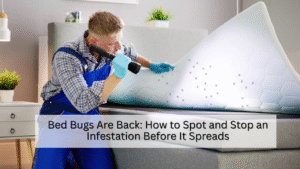If you’ve ever stepped outside to find your balcony or storefront covered in bird droppings, you know how frustrating it can be. It’s not just messy. It’s unhealthy, smelly, and can quietly damage your property over time.
Across Ontario, pigeons, gulls, and starlings are common troublemakers. They gather in big numbers, leave droppings that corrode metal, and make loud noises that never seem to stop.
Here’s the thing — birds are smart. Once they pick a spot that feels safe, they keep coming back. The only real solution is to make your property uninviting in a way that doesn’t harm them. That’s where bird proofing comes in.
Let’s talk about how it works, why it matters, and what you can do right now to stop unwanted birds from taking over your space.

Why Birds Love Your Property
Birds don’t pick random spots to land or nest. They choose places that offer food, shelter, and height. If your building has ledges, open vents, or roof access, it’s like a welcome sign for pigeons and gulls.
Here are a few reasons they settle in:
- Food: Open trash bins, food scraps, or nearby restaurants.
- Shelter: Roof edges, balconies, and vents shield them from rain and predators.
- Warmth: Exhaust vents and HVAC units give off steady heat.
- Height: Tall buildings offer safety from ground threats.
If you’re seeing more birds than usual, they’ve likely found all three on your property.

Why Bird Problems Shouldn’t Be Ignored
A few birds may seem harmless at first, but they create bigger problems fast.
1. Droppings Damage Property
Bird droppings contain acid that eats away at paint, stone, and metal. Over time, it stains walls, corrodes signs, and even damages car paint.
2. Health Risks
Droppings and feathers carry bacteria and fungi like Histoplasma and Salmonella. When dried droppings turn to dust, you can accidentally breathe them in — a real concern for workers or residents nearby.
3. Blocked Gutters and Vents
Nesting materials can clog drainage systems and vents, leading to leaks or fire hazards.
4. Business Image
For commercial buildings, bird mess on signs, awnings, or seating areas gives a bad first impression. Customers notice.
The truth is, bird problems are easier and cheaper to solve early — before they start nesting.
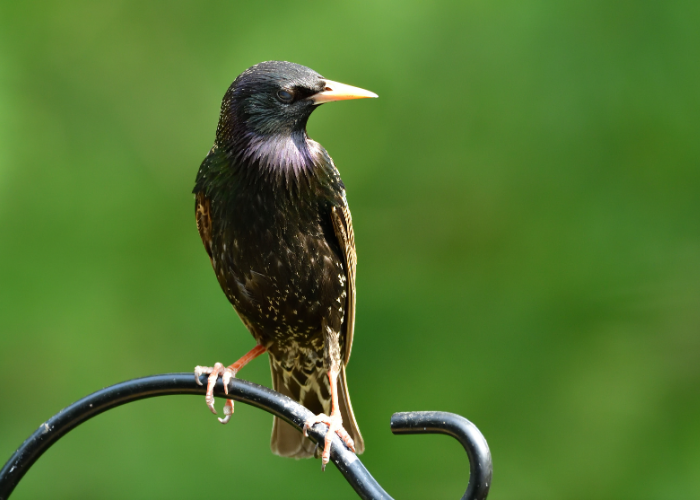
What Bird Proofing Actually Means
Bird proofing doesn’t mean harming birds. It means using clever tools and materials to gently keep them away from areas where they cause damage or risk. Think of it as setting boundaries between your space and theirs.
Let’s break down some effective options.
1. Bird Spikes
Best for: Ledges, beams, and flat surfaces.
Bird spikes are simple but effective. They stop pigeons from landing without hurting them. Once installed, birds quickly realize they can’t perch there comfortably and move on.
They work best in busy downtown areas where pigeons like to sit on signs, air conditioners, and roof edges.
2. Bird Netting
Best for: Warehouses, balconies, parking structures, and roof canopies.
Netting acts as an invisible wall that keeps birds out completely. It’s flexible, long-lasting, and almost invisible from a distance when installed properly.
If you’ve got a high roof or open loading dock, bird netting is often the most reliable fix. It keeps birds out without changing the look of the building.
3. Shock Tracks and Wire Systems
Best for: Ledges or roofs with frequent bird landings.
These systems deliver a mild, harmless pulse when birds land. It doesn’t injure them — it just feels uncomfortable enough to make them leave.
This option is popular on modern buildings and signage where appearance matters because it blends in seamlessly.
4. Bird Gel or Repellent Deterrents
Best for: Signs, light fixtures, and small surfaces.
Some gels and repellents create a sticky texture that birds dislike. They’re best used for small problem areas or where installing equipment isn’t practical.
Just remember: repellents wear off and need reapplication, especially after rain or snow.
5. Sound and Visual Deterrents
Best for: Farms, parking lots, or open spaces.
Reflective tape, predator balloons, or sound devices can scare birds temporarily. They’re great short-term fixes, but birds often get used to them.
For long-term results, it’s better to combine these with physical barriers like spikes or netting.
Signs You Need Bird Proofing
Wondering if your property needs attention? Here are a few signs it’s time to act:
- Constant bird droppings on balconies, signs, or vehicles
- Nests under solar panels or roof vents
- Birds roosting on ledges or HVAC units
- Unpleasant odors or flies near droppings
- Complaints from tenants or customers
If you check even one of these, it’s worth scheduling a professional inspection.
DIY Fixes vs. Professional Bird Proofing
You can try small DIY fixes like reflective strips or decoys, but here’s the truth — birds are quick learners. After a few days, they realize the “hawk balloon” isn’t moving, and they’re right back where they started.
Professional bird control experts look at the full picture: where birds land, what attracts them, and how to fix it long-term. They have access to stronger materials, better tools, and experience installing them safely — especially on tall buildings.
A certified company like BugManagers focuses on humane bird control that meets Canadian wildlife regulations, which means your property stays protected without harming animals.
How a Professional Bird Proofing Service Works
Here’s what happens during a typical BugManagers bird proofing visit:
Step 1: Site Inspection
An expert checks your roof, vents, and ledges to identify nesting spots and attractants.
Step 2: Recommendation
You get a detailed plan — what methods work best for your property type, budget, and local environment.
Step 3: Installation
Technicians install spikes, netting, or wire systems using durable, weather-resistant materials.
Step 4: Cleanup
Old nests, droppings, and debris are removed safely. The area is sanitized to prevent disease.
Step 5: Follow-Up
You’ll receive advice on keeping the space bird-free — like keeping food bins closed or checking roof access points seasonally.
This process ensures your problem doesn’t just go away for a week — it stays gone.
Seasonal Timing Matters
In Ontario, spring and early summer are peak nesting seasons. If you wait until birds are nesting, removal becomes harder and sometimes restricted by law.
The best time to bird proof is late winter or early spring, before nesting begins. That way, deterrents are already in place when birds start scouting.
Safe and Humane Practices
All bird proofing done by reputable companies follows humane control standards under Canadian wildlife regulations. The goal is never to hurt or trap birds but to prevent nesting and damage in a way that’s safe for everyone.
That’s why methods like spikes and nets are preferred — they simply make the area less appealing without harming a single bird.
How to Keep Birds Away After Proofing
Even after installation, a little upkeep helps keep your space bird-free.
- Keep trash bins tightly closed.
- Don’t feed birds near your property.
- Clean droppings quickly so they don’t attract more.
- Check for loose netting or spikes after strong winds.
- Trim nearby branches that give birds easy landing access.
Simple habits like these make a big difference.
Why BugManagers Is the Trusted Choice in Ontario
BugManagers isn’t just another pest control company. They specialize in bird control solutions for homes, condos, restaurants, and industrial sites across Ontario.
Their team uses custom-fit installations — not one-size-fits-all kits — which means your property gets exactly what it needs, nothing more or less.
From Toronto to Mississauga to Hamilton, they’ve helped hundreds of property owners regain clean, quiet, and bird-free spaces — without harming the environment.
Final Thoughts
Birds belong outside, not on your balcony, roof, or storefront. You don’t need to fight them — you just need to outsmart them.
With smart bird proofing, you can stop the droppings, protect your property, and avoid the constant cleanup that eats up your weekends.
If you’ve had enough of pigeons and gulls taking over your space, reach out to BugManagers. They’ll inspect your property, design a humane solution, and make sure the birds move on — safely and for good.
Your home or business deserves to look clean and stay healthy. With the right proofing, it will.



